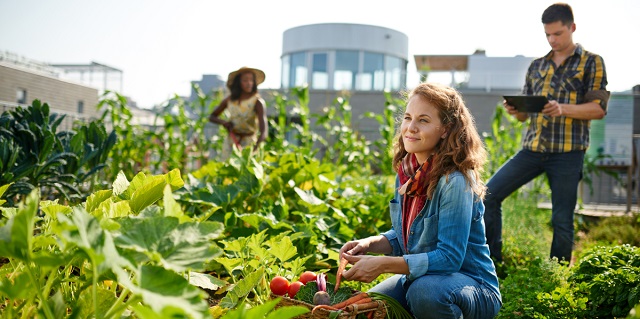Growing fresh and healthy food isn’t just for homeowners with huge backyards anymore. It doesn’t matter how big or small your outdoor space is, it’s still possible to grow plants and food for your own use and even to share with your neighbours.
Approximately two-thirds of the world's population is forecast to live in cities by 2050, according to the United Nations. With so many people now living in cities, there is a mounting movement to take even tiny plots of land and use this space for urban gardens. Even rooftops and balconies can be used to grow your vegetables and many city dwellers are rediscovering a personal connection to agriculture while enjoying their own, self-grown produce.
Everyone wins when food is grown locally. Not to mention the obvious benefit of healthy vegetables, gardeners also get to enjoy fresh air and exercise while developing a new hobby. There is also the added benefit of cutting down on emissions as you’ll be making fewer trips to the grocery store to buy flown and trucked-in food making this a win for the planet.
For those living in the city, lack of space is an obvious barrier to establishing a garden but even if you live in an apartment or condo with nothing but a small balcony – or even with no balcony at all – there are ways you can contribute to the urban gardening movement. Here are some ideas on how to get started.
Growing food in a condo or apartment
If you want to grow food in a condo or apartment in a Canadian city, you’re likely going to have to resort to growing vegetables in pots . Nothing wrong with this! You can cultivate amazing tomatoes, cucumbers, lettuce, kale, herbs and more. There are some start-up costs involved such as buying pots, potting soil, trellises and other gardening tools but these costs are soon offset with the money you’ll save on your grocery bill.
What you can grow successfully depends on the amount of sun your balcony or rooftop will get, but even if you’re in the shade there are still plants that will happily grow with only minimal light. You can buy seeds or starter plants (which is way easier) from a nursery. The staff at a nursery are also a great resource to tap into on what grows best in your area. Here are some ideas to maximize your space:
• Go vertical: Installs shelves around your balcony to hold plants
• Buy stacking boxes
• If permitted in your building, consider attaching pockets to the sides of the balcony to hold a dozen mini plants
• Cover your railing with a trellis and grow trailing plants
• Hang baskets on the wall with hooks and secure them on the edge of your railing
With just a quick online search you will find all kinds of free planter design ideas and you’ll be amazed at the possibilities.
How to grow plants even if you have no outdoor place
Community gardens
Do you live in a condo or apartment with no access to a balcony or the rooftop? Stuck in a basement apartment with no backyard you can use? No problem: you can still grow fresh food by using public or private yards.
Cities across the country have started to promote community garden spaces. These are wonderful programs that offer residents a plot of land in which to grow vegetables. For instance, Toronto has over thirty plots of land reserved specifically for shared gardening. Note, however, that it can be competitive to get a spot, so check with your city for details and register as early as possible to reserve your space.
Backyard sharing
Another great initiative that is gaining momentum is for homeowners with larger yards to share their garden space with others. This option makes a lot of sense for owners who could use a little extra help with their gardens while giving those in apartments and condos an opportunity to experience the satisfaction that comes with nurturing their little vegetable patches.




 Travel and lifestyle
Travel and lifestyle